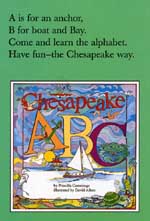 One Bay, Four Authors, 33 Books One Bay, Four Authors, 33 Books
By Hanne Denney
Is the Bay itself inspirational, with something in the environment that stimulates creativity?
Z is for a zephyr,
A soft and gentle breeze,
Blowing small white sails
And moving boats with ease.
Most mothers dread the day their child develops a case of the flu. Confinement to the house with a feverish, nauseous and soon-bored child is not usually a time of great creative activity. But when author and Annapolitan Priscilla Cummings found herself at home with her daughter Hannah's case of flu, she thought of a game to pass the sickroom hours. Could Hannah and her mom develop an ABC listing of Chesapeake Bay features, wildlife and activities?
Marlin Fitzwater was not looking for activity but for a culture of real people and quiet beauty when he moved to Deale and began to write after sitting in the hot seat as White House press secretary for presidents Ronald Reagan and George Bush. First he wrote of those years in Call the Briefing, which was published in 1993. Now he's written a work of fiction, Esther's Pillow, to be published in June 2001.
Mick Blackistone, of Fairhaven, is vice president of government relations for the National Marine Manufacturers Association and so good an advocate for the industry that the Marina Operators Association named their man of the year in 2000. He's also a 15th-generation descendent of Maryland's original settlers, and, by proclamation of former Gov. William Donald Schaefer, an Admiral of the Chesapeake. Blackistone's long and intimate knowledge of the Bay way of life has made him an environmentalist. That commitment has translated into seven books for adults and children. His latest is soon-to-be-issued Dancing with the Tide: The Watermen, with more in the works.
Donald Shomette, of Calvert County, combined his love of history and scuba diving to seek adventure exploring the underwater history of the Bay. He heard stories of pirates and lost towns, and he verified them with the evidence he found off the Bay's shores. He gathered the stories of underwater villages and sunken ships into a series of books, including Pirates of the Chesapeake and, most recently, Lost Towns of the Chesapeake.
These four became authors when ideas born by the Chesapeake Bay forced their way into the open. Chesapeake Country seems extraordinarily rich in writers. It's hard to say whether writers are drawn to the area for its natural beauty, or if the beauty inspires average people to become writers. Whichever way, readers in Chesapeake Country enjoy a literary banquet.
Annapolis bookstores are frequent stops for local authors promoting their works. Stephanie Gosman, assistant manager at B. Dalton Booksellers, says hardly a weekend goes by without a local author in house to sign books and meet readers. "Local writers are well received. The Annapolis area boasts several strong writer's associations, including a group of quite successful mystery writers, and one for romance authors," she says.
We offer the stories of these four authors - Cummings, Fitzwater, Blackistone and Shomette - as testimony to the inspirational powers of the Bay and as encouragement to all the other writers of Chesapeake Country.
Priscilla Cummings
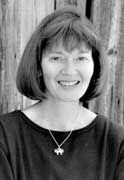 Her daughter's flu infected Priscilla Cummings with her Chesapeake ABC. Published in 2000 by Tidewater Publishers, the book is dedicated "H is for Hannah, who helped." Illustrations by David Aiken are based on the sights of the Chesapeake Bay region, helping children and adults feel at home in the book. Geese, herons, jellyfish, oysters, orioles (both birds and baseball) appear in 27 delightful four-line poems. Her daughter's flu infected Priscilla Cummings with her Chesapeake ABC. Published in 2000 by Tidewater Publishers, the book is dedicated "H is for Hannah, who helped." Illustrations by David Aiken are based on the sights of the Chesapeake Bay region, helping children and adults feel at home in the book. Geese, herons, jellyfish, oysters, orioles (both birds and baseball) appear in 27 delightful four-line poems.
A good ABC book is a pleasurable experience for children, who can learn from it while enjoying rhymes, rhythm and clever word usage. When children hear "A is for Apple" (or "anchor") letter sounds and words are reinforced, for the phonics method of teaching reading does work. The quacks in the "Q" poem are fun to say and so easily memorized to say to any ducks one meets.
"Q is for quack, quack!
That's how ducks like to talk.
"Quack, quack! Let's go in swimming!"
"Quack, quack! Let's take a walk!"
Cummings has written 10 children's books, most notably the Chadwick the Crab series. Her tales are scientifically accurate works of fiction. As she describes it, "there's a fine line between fiction and non-fiction. The crabs in my stories have the characteristics of their species, but then crabs don't talk, and mine do. Children do understand this line."
When Cummings moved to Maryland with her husband, he gave her a copy of Beautiful Swimmers, Pulitzer-prize winning William Warner's narrative of the crab's life cycle. As she read, Cummings was intrigued by the idea of all these crabs wintering in the deep warm mud of the Bay. A question bubbled up in her mind: "what if a crab didn't want to sleep away the winter in the mud?" With the timely opening of the Baltimore Aquarium, the answer arrived: Chadwick the Crab decides to winter in the Aquarium.
Cummings gained considerable knowledge about crabs and other Bay wildlife through personal experience. Her mother-in-law lived in Virginia on the water, and the family caught crabs from her pier. A waterman lived next door, and he gave valuable information and good stories.
Cummings believes in doing her homework as well as in first-hand experience. She reads lots of books and collects magazine and newspaper articles for reference. She works the phones, developing a good contact list of experts on the Bay's ecosystem to give her additional sources. "A good fiction writer must act like a reporter by asking questions and gathering information," she explains.
The well-read Cummings makes a lot of public appearances. She especially enjoys giving readings to school groups. "I love it!," she says. "Kids give great feedback during my school readings. I try to schedule one school per week." Cummings says she enjoys the children's questions. "Fifth graders like to ask concrete things, like 'how much money do you earn?'" A child also warned her: "If you kept a red crab, it will stink up your room!"
As children keep Cummings inspired, a journalism professor nourished her interest into a career. She worked as a reporter for 10 years, writing for four papers in four states. After burning out on reporting - "I wanted to write longer things and develop a style," she says - she tried other kinds of writing. Chadwick the Crab took over a year and 16 rejections to find its publisher - finally becoming a book the year her son William, now 14, was born.
Cummings' books are set in Chesapeake Bay, but she hopes they reach a larger audience. "Children outside the Chesapeake Bay region can still enjoy my books - just as my children enjoyed books about farms," she says, noting that reading books about new areas offer children "a broadening experience."
Cummings has now written books both for younger and older children. Dutton Children's Books published her first novel, Autumn Journey in 1997. Her 11th book, also a novel for school-aged children, appears this spring. "Each book in and of itself is a goal," she says. "Each one has a message I want to impart with the story."
Marlin Fitzwater
Fitzwater's father lay dying. Gathered round the deathbed, the family heard the dying man repeat a name again and again. It was a name no one knew. It was a name Marlin, the eldest son, never forgot.
After his father's death, Marlin Fitzwater just had to know who the mystery man was. Discovering the story took Fitzwater to courthouse records, newspaper archives - and a long-buried family secret.
In 1911, in a small town in Kansas, a schoolteacher was accused of seducing her student. The citizens rose up in anger, tarring and feathering her. Fitzwater's great-uncle had joined the vengeful mob. Appalled, his Quaker family turned him out. He would leave Kansas, and they would never speak of him again. Until the senior Fitzwater's death, his name had not been said alou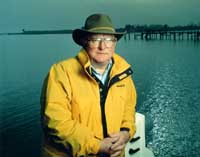 d. Indeed, his entire life has been forgotten. d. Indeed, his entire life has been forgotten.
Fitzwater still does not understand why his father repeated his uncle's name. But he did recognize a good story when he heard one, and thus was born the novel he would write on retiring to Deale and building a home bound by Parker Creek and Chesapeake Bay.
After serving as White House press secretary for 12 years, Marlin Fitzwater sought retreat from the hectic pace and pressure of political life. It was back in 1985 when he drew a line on a map around the District of Columbia, with parameters that kept him within cell phone reach and a one-hour drive of the White House. Deale was right on that line. It took but one visit to the town he described in his previous book, Call the Briefing, as having "no city hall, no sidewalk, and no clothing store selling slickers and white pants to boaters," to prove he had found a "culture of real and honest people."
Happy Harbor was full of people with stories, families and lives beyond the scope of the U.S. government - and Fitzwater felt he had found the home he'd missed since his childhood in Kansas. First he spent weekends there. After his retirement from government following George Bush's electoral defeat, he built a new home on Parker Creek and began to write in earnest.
Fitzwater's previous book - Call the Briefing: Reagan and Bush, Sam and Helen: A Decade with Presidents and the Press - tells a good story, the story of Fitzwater's years as White House press secretary. Fitzwater respects the staff of the White House, the presidents he worked for and the press corps he addressed. But he also recognizes the weaknesses of individuals and the complexity of professional and personal relationships.
Relationships also inspire his new book, Esther's Pillow, to be published in June by PublicAffairs, a member of the Perseus Books Group. Fitzwater calls it "a collection of interesting characters and passionate motives, shaped into fiction."
The boys didn't have much to say, suddenly realizing that so many wheels had been put in motion, so many people involved, that they could not back out.
Fitzwater allows that his view of the Bay must be inspirational, for he is already working on a second novel. This one is a mystery involving watermen, the Bay way of life and murder.
Mick Blackistone
The wives of watermen hope their children don't follow in their father's footsteps. Yet the families know that some youngsters are called to the water. Will there be a viable fishery for the children to inherit? The watermen worry about the future of their livelihood, for they harvest their fish without control over future stock replenishment.
Mick Blackistone, too, wonders whether "commercial fishing [can be] a viable enterprise for the new millennium, given environmental concerns, development issues and fishery stocks."
He seeks to answer that question in Dancing with the Tide: The 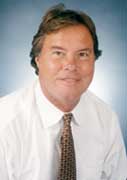 Watermen, to be published by Cornell Maritime Press in May 2001. In it, he records a subculture of our economic community while documenting a year in the lives and harvests of the watermen. Voices of the watermen bring the story to life. Watermen, to be published by Cornell Maritime Press in May 2001. In it, he records a subculture of our economic community while documenting a year in the lives and harvests of the watermen. Voices of the watermen bring the story to life.
"Watermen know when species are declining or improving. They know when eels leave the mud, crabs move to different sites, when and where oysters are surviving or dying, when and where rockfish are growing beyond the juvenile stage, where grasses are growing or receding and so much more. They don't need expensive reports to tell them these things. They know them because their existence depends on that knowledge."
Blackistone has faith in watermen's knowledge of their Bay. He says, "I continue to think society as a whole, including government, scientists and developers, do not take into account enough of watermen's knowledge of what is happening. Watermen are easy scapegoats to take blame for what is happening in the Bay." In the argument of who causes more harm to the estuarine environment, the commercial fishery or the development industry, Blackistone votes for the builders.
In all his books, Blackistone takes inspiration from the Bay's real-life problems. His two children's books, The Day They Left the Bay and The Buffalo And the River, teach that humans must protect their habitat from further destruction. Lee Boynton and Jennifer Heyd Wharton beautifully illustrate the books, as Blackistone likes to work with artists from the Bay area, who are inspired by natural beauty.
His first non-fiction work was published in 1989. Sunup to Sundown: Watermen of the Chesapeake presents a year in the life of watermen in Maryland and includes representative stories, science lessons, poems and songs. Accompanying photographs are by James Parker. Dancing with the Tide is the sequel, chronicling the changes the last decade has brought to the watermen's way of life.
It is increasingly difficult to make a living working the Bay as a waterman, and Blackistone's books explore what may be a disappearing subculture. He notes there is restricted access to the Bay since a limited number of commercial fishing licenses are issued. He concludes the best watermen are those who "maintain their viability," seeking new markets and fisheries. He also believes watermen need to prove they can self-regulate.
"It is not a race for the last fish for the watermen. But for the development community it is a race for the last piece of land," he concludes. If Blackistone is right, we may need his books to reminds us how the unique lives of Chesapeake Bay watermen were lived.
Donald Shomette
In 1970, a post-graduate scuba diving vacation changed the direction of Donald Shomette's life. Diving in Florida, he witnessed a salvage effort on a long-los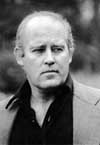 t Spanish galleon. The crew working on the buried ship were, as it turned out, little more than treasure hunters. As he watched them bring up artifacts, Shomette realized that the history lost by the rough, unscientific salvage effort was worth much more than the treasure found. t Spanish galleon. The crew working on the buried ship were, as it turned out, little more than treasure hunters. As he watched them bring up artifacts, Shomette realized that the history lost by the rough, unscientific salvage effort was worth much more than the treasure found.
Thus was Shomette's life's work born.
In 30 years, Shomette has recovered the history of Chesapeake Country by diving for its underwater past. A recognized historian of Chesapeake Country awarded an honorary doctorate by the University of Baltimore, he has preserved his discoveries in 12 books and dozens of articles.
His latest volume is Lost Towns of the Chesapeake, published late in 2000 by Tidewater Press.
Lost Towns explores the towns created between 1668 and 1751 under the "New Town Acts" of the government of Maryland. A total of 130 port towns came to life under these acts; only 15 have survived. The others have disappeared, to be rediscovered by historians and archaeologists who try to reconstruct their history. In recovering the history of these towns, Shomette has recorded tales of chicanery, political upheaval and constant silting and erosion by Bay waters.
Some of Maryland's early towns achieved notoriety far beyond their diminutive sizes. Yet most shared a common end: an early demise and dark oblivion.
-Introduction: Lost Towns
Shomette writes history with the idea that both "major and minor people play a role in the shaping of towns." The stories of these "lost towns" are "for the people who built the state: the merchants, indentured servants, blacks, common man, every man," he says.
Shomette, a former staffer of the Library of Congress, now dubs himself a self-employed cultural resource consultant. He began his study of lost towns with the first underwater survey of London Town in 1974. He has since visited each of the 10 sites he chose to describe in his book, exploring them both on land and underwater.
Along with the well-known site of London Town in Edgewater, Shomette has chosen Battle Town, St. Leonards Town, Lower Marlboro, Nottingham and Frenchtown. His telling of their stories combines historical information based on original documents with stories of his explorations and his conjectures about the people who helped develop and design the towns and who lived in them.
Shomette's history is highly detailed, with tiny print that sometimes makes it difficult to read, for there is a lot to learn. If you want to know even more, Shomette tells you where to look. Some photographs are included, along with a map indicating the location of each of the "legislative towns of tidewater Maryland." Lost Towns also provides a complete list of all 130 towns formed in the original Acts of the Maryland Government.
"All of the towns I have addressed ultimately failed for a variety of reasons Each had flickered into existence against all odds and actually flourished before disappearing into the twilight of antiquity or being reborn as an entirely different urban entity. As a consequence of their eventful but often truncated lives, the fortunes and future of tidewater Maryland society were molded," Shomette writes.
We can look forward to more books from Shomette for, he assures us, there's much more history to discover. He has catalogued many shipwrecks, including 142 known wrecks in the Patuxent River. He has inventoried and assessed resources, and he warns that even in Maryland - which he calls a "leader in historical preservation" - erosion is stealing our history. Prioritize and act, he says, lest our towns be lost forever.
Inspired by the Bay
Four writers, four different topics, four different styles. All have been inspired by the people, places, history and natural world of Chesapeake Bay.
Do you find words gathering in your mind, shaping a description of place or feeling that you must record? If so, you may be falling under the inspirational spell of the water. You don't have to live in that waterfront cottage with a separate office for writing great books. You just have to have something to say and a pen or computer to transcribe your thoughts. And, if you want to share, someone to read them.
Baltimore's Charmed Life
The most enjoyable reading is about people and places, whether those lost in history or those now alive. A good story is a good story, as they say. From the north of the Bay region, Baltimore, comes a volume of essays created to record the stories and history of fascinating people and places.
Charmed Life is a collection of articles taken from the City Paper's column of the same name featuring stories of local Baltimore lore. Three authors - Tom Chalkey, Cha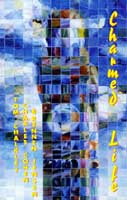 rles Cohen and Brennen Jensen - exploring the people, places, history, monuments of Baltimore found little-known stories to share. As Andy Markowitz, editor of City Paper, noted in his introduction to the 2000 Woodholme House Publishers anthology, the authors "share a love of Baltimoreana and the uncanny ability to spot a potential story just by walking down the street." rles Cohen and Brennen Jensen - exploring the people, places, history, monuments of Baltimore found little-known stories to share. As Andy Markowitz, editor of City Paper, noted in his introduction to the 2000 Woodholme House Publishers anthology, the authors "share a love of Baltimoreana and the uncanny ability to spot a potential story just by walking down the street."
The intriguing stories come from the authors asking themselves the same kind of questions you might ask walking around as a tourist or through your own neighborhood. "Why exactly is there an anchor leaning against St. Ann's Catholic Church when the harbor is more than a mile away?" As Brennan Johnson writes in his column answering this question, "There's a story surrounding it, of course."
Does Baltimore have an official city song? Is there a key to the city? You'll find the answers in Charmed Life.
In the wake of the historically confusing presidential election of 2000, you'll enjoy reading about Baltimore's election history of the 1850s, when the Know Nothing Party determined outcomes. Or would you like to know how the Chesapeake Bay retriever came to be a distinct dog breed? The answer lies in a seafaring accident.
The City of Baltimore is known for its unusual and often eccentric people. You'll meet Bubbie the Balloon Man and the Bird Lady of Dundalk. Two anglers, Joseph Barnhart and Mike Womack, share their knowledge about city fishing and the ecology of Gwynn Falls. There's also a story about the Independent Order of Odd Fellows.
The authors obviously love their own city and the many stories of its history and people. If you enjoy reading Bay Weekly, you'll enjoy the off-the-beaten-path tales of Charmed Life.
Copyright 2001
Bay Weekly
|